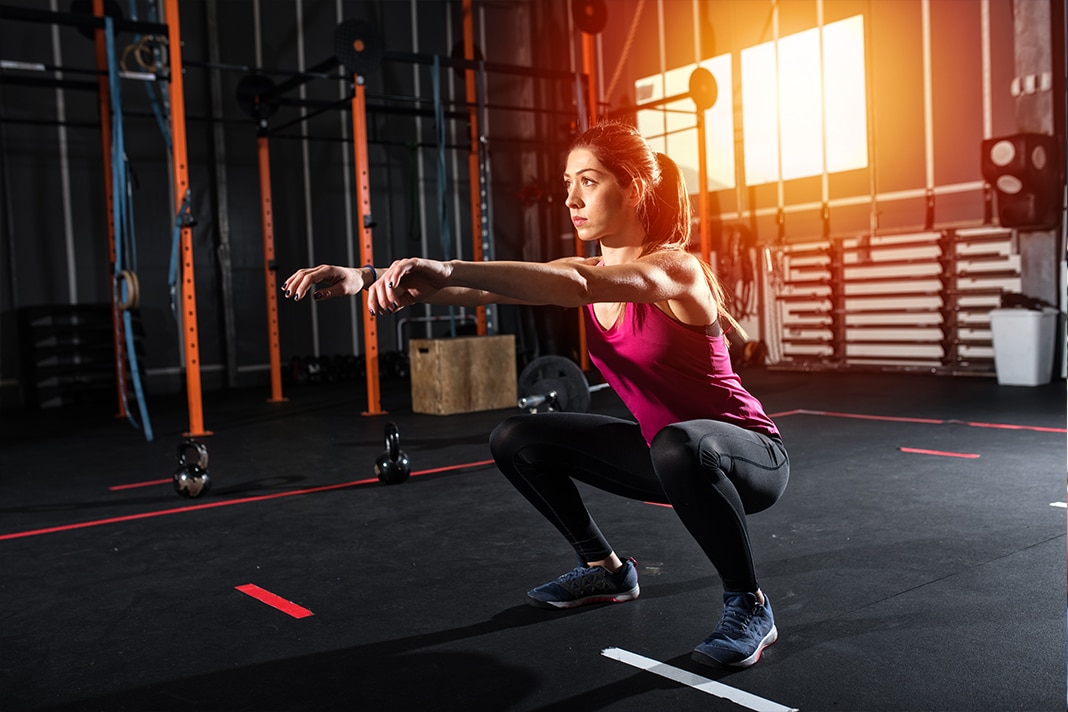A proper warm-up is one of the most important aspects of training. The goal of the warm-up is to improve blood flow and loosen your joints to optimize your performance for the upcoming workout and reduce your risk of injury. Your warm-up should also be used to mentally prepare yourself for the work that lies ahead. This can include visualization techniques, self-motivation, and strategy breakdown, for example. Mentally preparing for a workout can improve technique, skill and coordination, and mental resilience.
The amount of time athletes require to reach a workout-ready state may vary from individual to individual. A younger athlete, for example, may be able to complete a proper warm-up in 10-15 minutes while an older athlete’s needs might be double that.
The Research Says…
A meta-analysis published in the Journal of Strength and Conditioning Research examined 32 studies on the effects of warming-up on physical performance. The majority of the studies (79%) showed a performance improvement when a warm-up was incorporated, with 3% showing no changes at all, and 17% showing a negative effect. Improvements were shown in aerobic and anaerobic sports, and sports that required explosiveness, agility, and balance and coordination. Amongst the participants in the studies, the degree of performance improvement varied widely, from less than 1% to almost 20%.
Accounting for the 17% Negative Effect
While most of the studies showed a positive effect from warming up, 17% showed it was detrimental to performance. However, upon closer examination, it’s clear that many of the warm-ups used in those studies did not follow the best available practices; they were either not specific to the sport being performed by the participants, were too intense, or were done too far ahead of the actual performance.
So let’s make sure you’re warming up the right way!
The 3-Phase Warm-up
1. General Warm-up
The goal here is to elevate your body temperature and loosen your joints. You can do this with a short run, row, or plyometric routine. Keep in mind, you don’t want to fatigue your body. This phase should take 2-5 minutes. This general warm-up is also a great time to prep your mind for your training-visualize how you will make the most of the upcoming training and set yourself up for success.
2. Specific Warm-up
During this phase of the warm-up you want to focus on the muscles and joints, you’ll be primarily using in your training. Further, you want to focus on the muscles or joints that can limit your performance. During this phase, you’ll focus on mobility and active stretching techniques. For example, if you tend to have tight shoulders or hips, then you want part of your specific warm-up to focus on this part of your body. Depending on your body’s needs, this phase can take between 5-10 minutes.
3. Add Load
After the first two phases, your body should be ready to move some weight. Slowly add weight to your bar (or whatever you’re using) until you get to your working weight. Every person is different so it’s important to listen to your body’s needs. Some individuals need to increase weight very slowly while others are comfortable with big jumps. Depending on how much weight you’ll be working with, this could take anywhere between 2-10 minutes.
Sample Phased Squat Warm-up
Part 1: General Warm-up
2-Minute Easy Bike
1-Minute Tempo Pace Bike (70-75% Effort)
2-Minute Easy Bike
Part 2: Specific Warm-up
Spend at least 5-minutes opening up hips through different exercises. Spend 2-3 minutes firing up glutes. Remember, the key is to focus on the parts of your body that will be doing most of the work and will limit you the most if not properly prepped.
As needed, flow through a variation of these movements.
10 Alternating Squat Thoracic Rotations
6 Lateral Band Walks (Each Direction)
30-Second Deep Squat Hold
30-60-Second Lunging Hip Flexor Stretch
Part 3: Add Load
Assuming you’re starting at 70% of a 265lb back squat, part 3 of your warm-up may look like this:
45lbs (empty bar) x 6 reps
95 x 4 reps
135 x 2 reps
185 x 1 rep
225 x 1 rep
245 x 1 rep
Weights will feel heavier or lighter depending on how you feel that day. Opt for smaller weight jumps, if the load feels heavy. If the weight is moving easily, you can increase the load more quickly and save your energy for the actual workout. You should increase your load if you’re happy with your prior set. If you feel confident, go up!
Photo: @alphaspirit/AdobeStock















